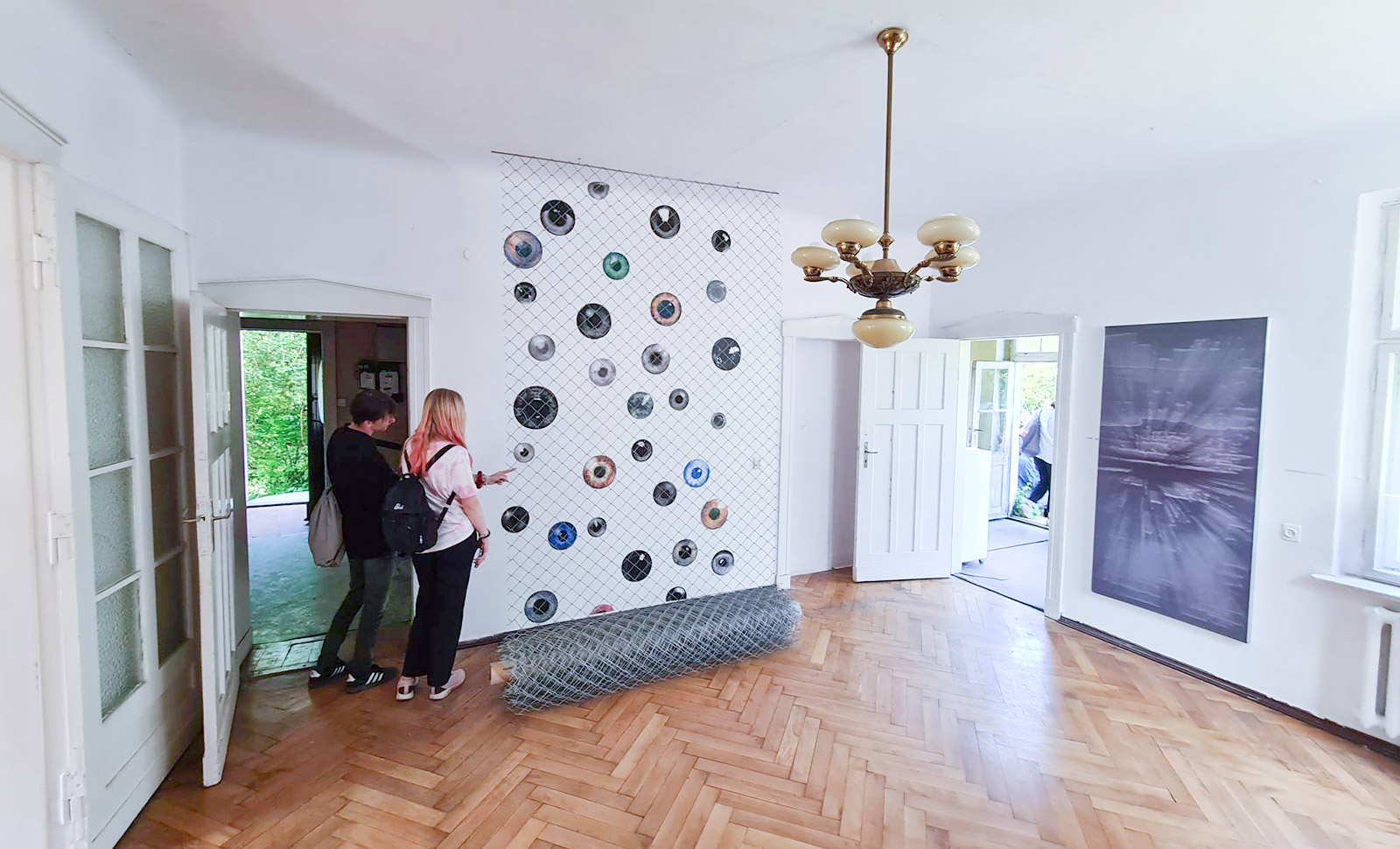Duration of the exhibition:
4.06-24.06.2023
Opening:
June 4, 2023,
time. 16.00-20.00
Opening hours:
Thursday, Friday, Saturday 16.00-20.00
on other days after making an appointment by phone 668275300
Curators: Paweł Flieger, Julia Królikowska
Visual identification: Agata Kulczyk
Accompanying text: Julia Stachura
Participants:
Mateusz Chomicki
Mateusz Dąbrowski
Tomasz Drewicz
Paweł Flieger
Diana Fiedler
Jerzy Hejnowicz
Celina Kanunnikava
Kamila Kobierzyńska
Piotr Kotlicki
Piotr C. Kowalski
Julia Królikowska
Ewa Kulesza
Sławomir Kuszczak
Jakub Malinowski
Adam Nowaczyk
Marlena Promna
Mateusz Piestrak
Kinga Popiela
Arkadiusz Ruchomski
Max Skorwider
Sebastian Trzoska
The motif of the fence in Polish art, i.e. next door
The yellowed page of the excavation diary from the excavations carried out in Sołacz in August 1909 states the discovery of the remains of a settlement from the Stone Age. In the notes translated from German into Polish, you can read about a pottery kiln, pottery shells, charred wood, a hearth that was later packed into a chest, a smelting furnace, half of a stone plow head or a grinding stone found in a ditch. Located by Wilhalm Thamm, an employee of the Kaiser-Friedrich Museum, the archaeological site provided information about the multicultural and complex period of transformation in the Poznań region. Among the rich documentation there was also a letter from impatient Hermann Krahn, the owner of the property where the research began:
“Unfortunately, for economic reasons, I am forced to ask you to stop excavations in my area, in Sołacz, by the 8th of this month at the latest. Owing to the early spring, I must start tilling the land now, and besides, I have adequate manpower at this time to do the above. Please, kindly arrange the work so that by April you can hand over the land to me in its former condition.”
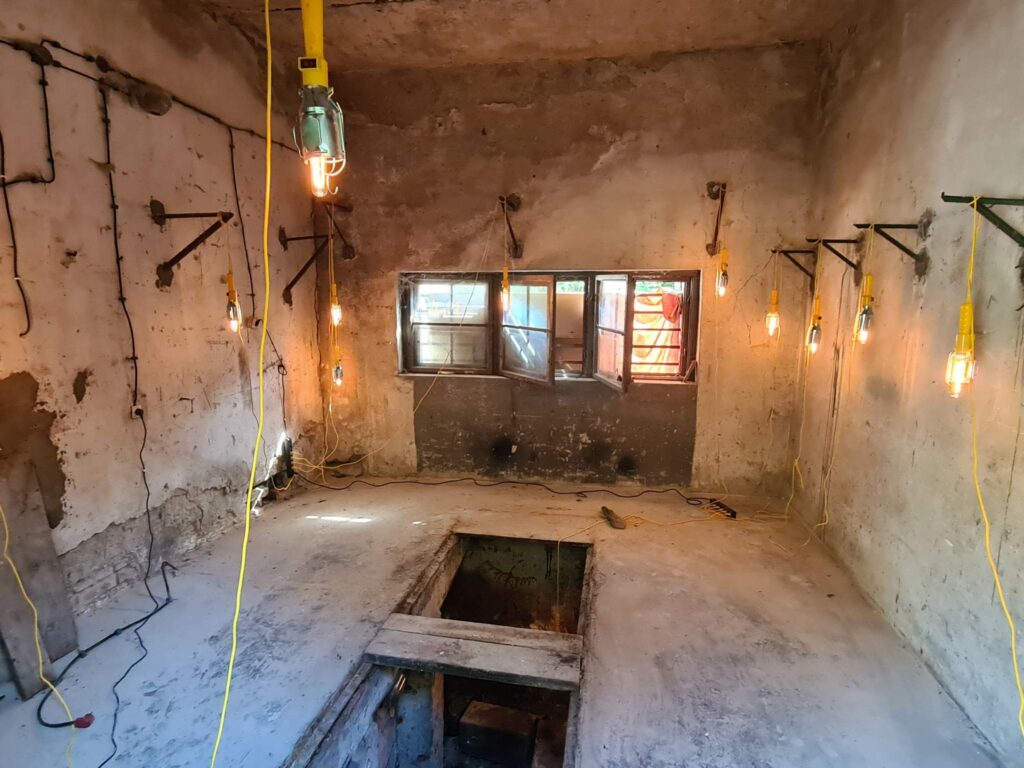
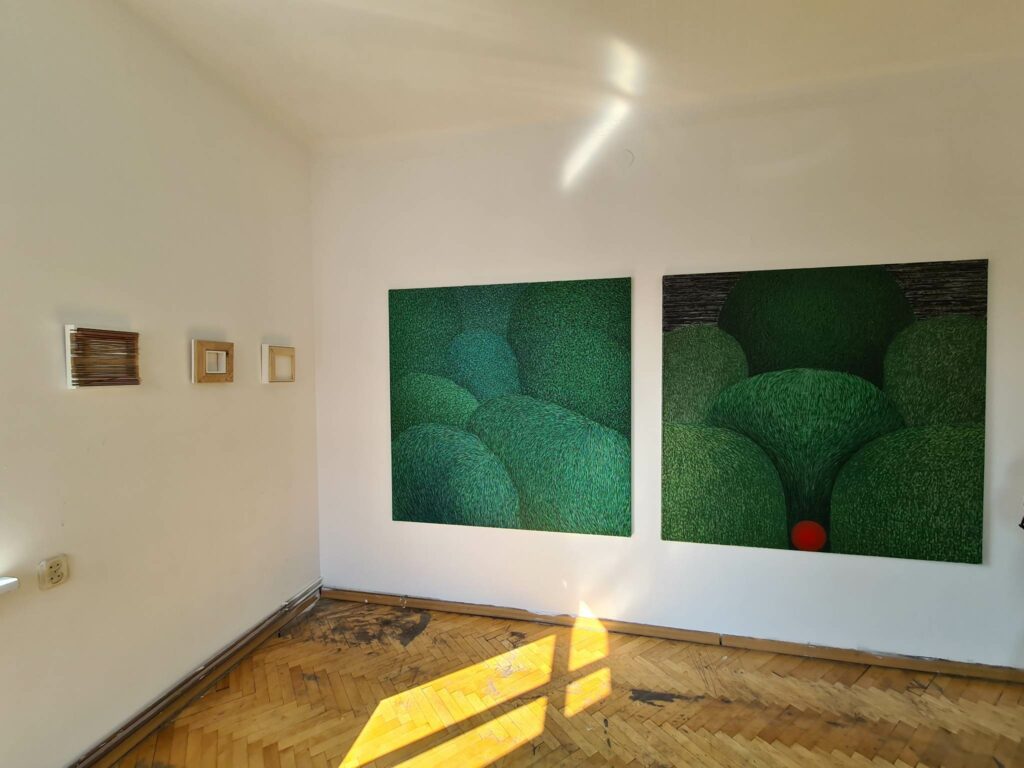
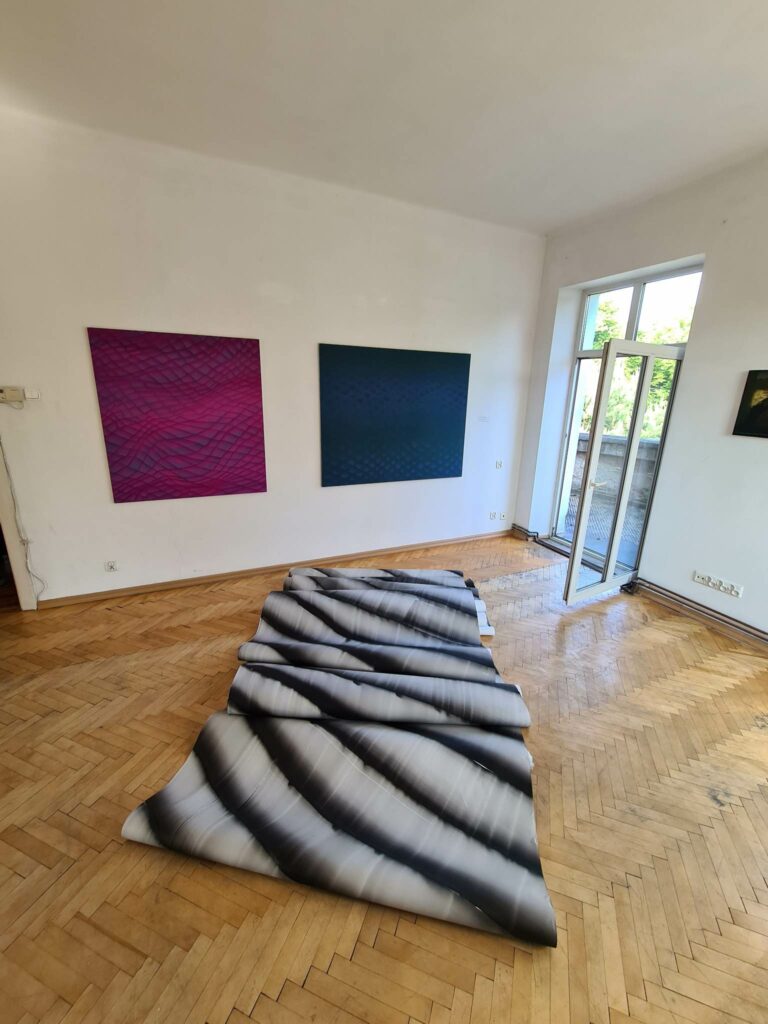
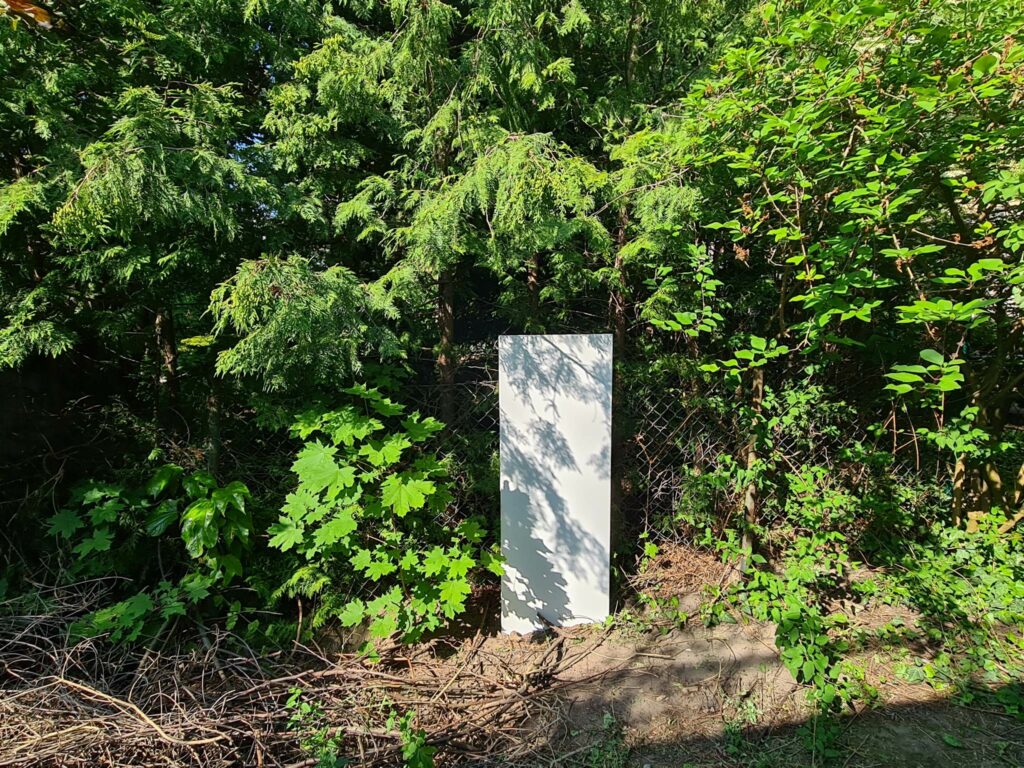
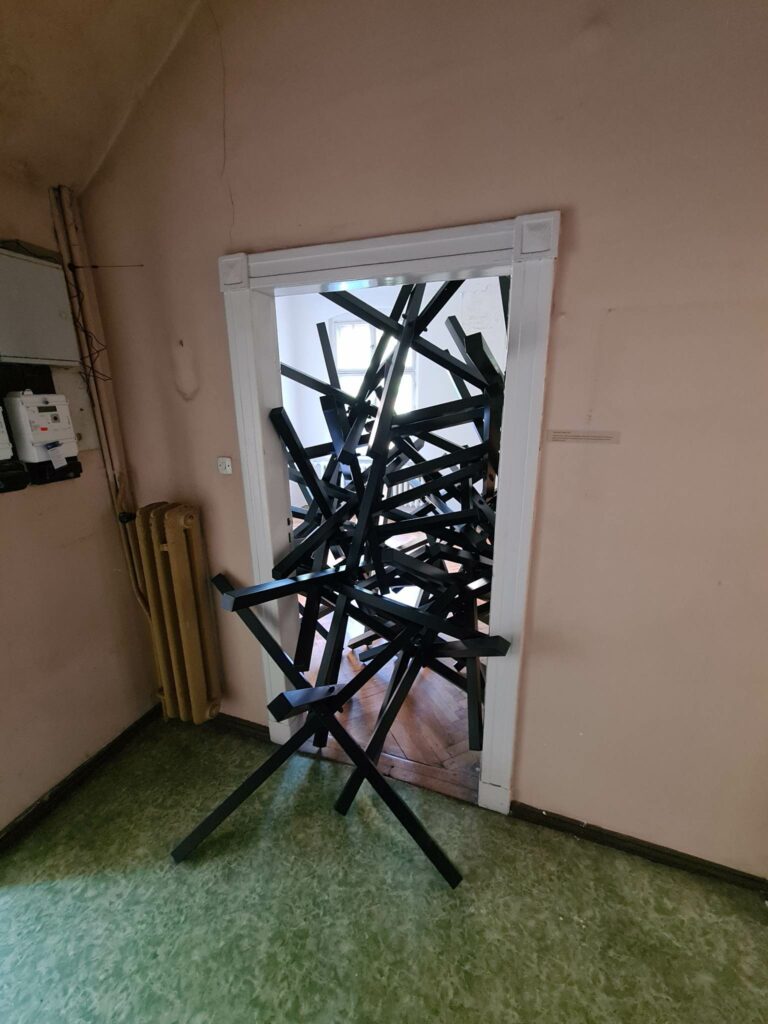
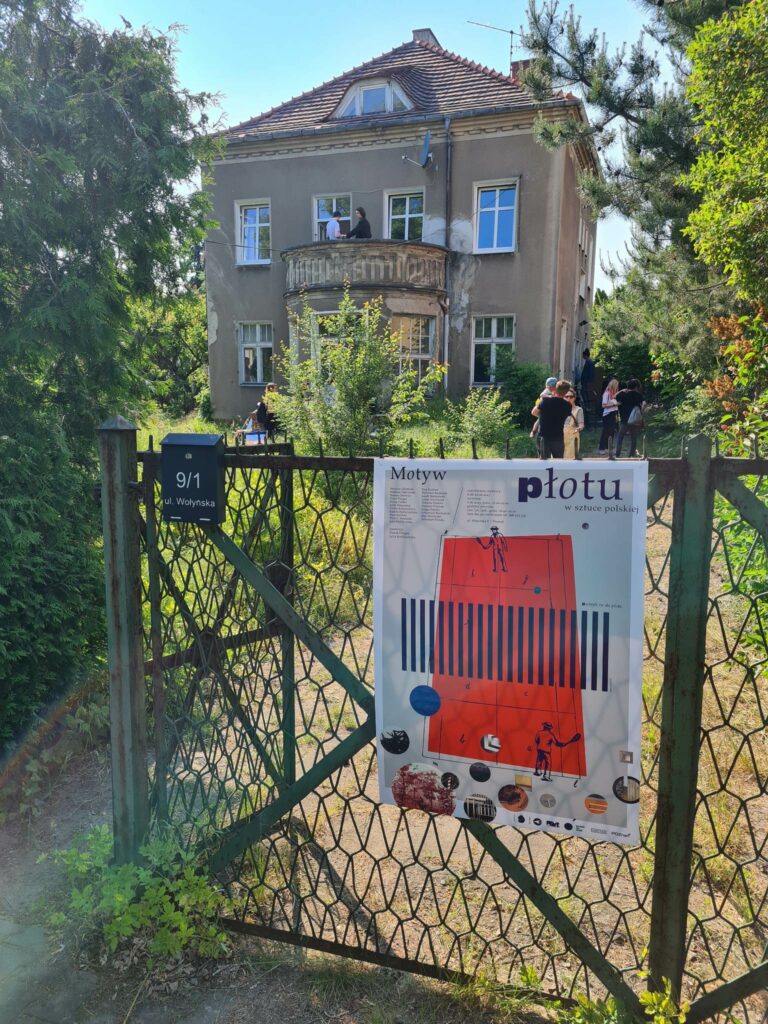
Sołackie care of the area, ownership and belonging is inscribed in the history of the villa estate. During neighborly arguments overheard by chance over morning coffee, borrowing a glass of sugar, visiting a garden party or excavations [sic] – in each of these moments we cross the border of someone’s fyrtl, either physically or symbolically.
The motif of the fence contained in the title of the exhibition is a humorous phrase from the jargon of cross-sectional exhibitions, often forcibly proving visual kinship or belonging. The fence escapes from unambiguity – it is familiar, though often problematic, connecting and dividing, depending on the context, territory and property. It is a border with a weaker or stronger existence, often conventional and overgrown with vegetation, which will poke the person on the other side with its green arm anyway.
Will the works exhibited at Sołacz settle in? Or will they become intruders? Go to the fence and see for yourself.
Julia Stachura
